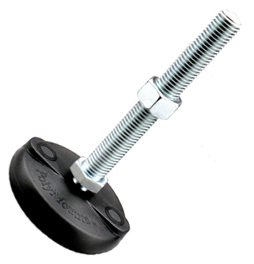
Think all leveling feet are the same? Think again. While they allow you to level objects, some leveling feet perform better than others. Polymount leveling feet, for instance, are an excellent choice for nearly all leveling applications. You can use them on machines, appliances, furniture, storage units and more. Polymount leveling feet offer several benefits, including the following.
Supports Leveling on Uneven Surfaces
You can use polymount leveling feet on uneven surfaces. Polymount leveling feet feature a 15-degree tilt-off centerline. As a result, they support leveling on uneven surfaces. You aren’t limited to using them exclusively on flat surfaces. Even if a surface is sloped or angled, you can use polymount leveling feet on it.
Won’t Scratch or Damage Floors
If you’re planning to use them indoors, you can rest assured knowing that polymount leveling feet won’t damage your floors. They feature a threaded rod that’s made of zinc-plated stainless steel or carbon steel. The padded base of polymount leveling feet, however, is made of a softer glass fiber nylon material. With their soft yet durable base, polymount leveling feet won’t scratch hardwood, laminate or other varieties of indoor flooring.
Can Be Mounted With Bolts
Another benefit of polymount leveling feet is their ability to be mounted to the floor with bolts. Polymount leveling feet have lag holes. For greater stability, you can mount them to the floor by driving bolts through these lag holes.
Other types of leveling feet typically can’t be mounted with bolts. Rather, they are designed to sit freely on floors or the ground. Polymount leveling feet are distinguished from other types of leveling feet by their use of lag holes. The lag holes are designed for use with bolts. You can mount polymount leveling feet to the floor by driving bolts through the lag holes.
Available in Tapped and Stud Styles
You can find polymount leveling feet in tapped and stud styles. Tapped polymount leveling feet are characterized by the use of interior threading. They essentially have a nut at the top.
Stud polymount leveling feet feature a threaded rod rather than interior threading. They are more common than tapped polymount leveling feet. While tapped polymount leveling feet have a nut, stud polymount leveling feet have a stud or bolt. When choosing a style, you should consider the object. If the object already has bolts on the bottom, you may want to choose tapped polymount leveling feet. If the object doesn’t have bolts on the bottom, you’ll probably want to choose stud polymount leveling feet.
